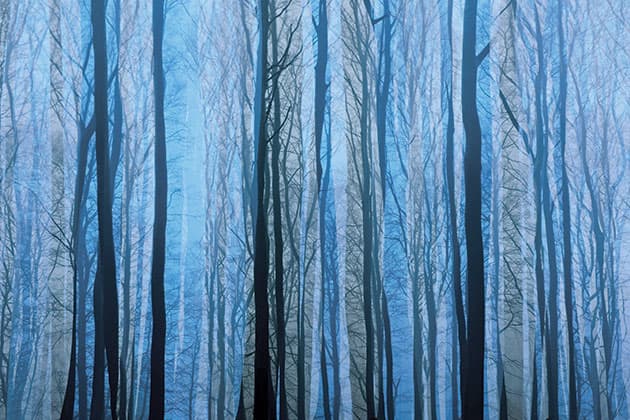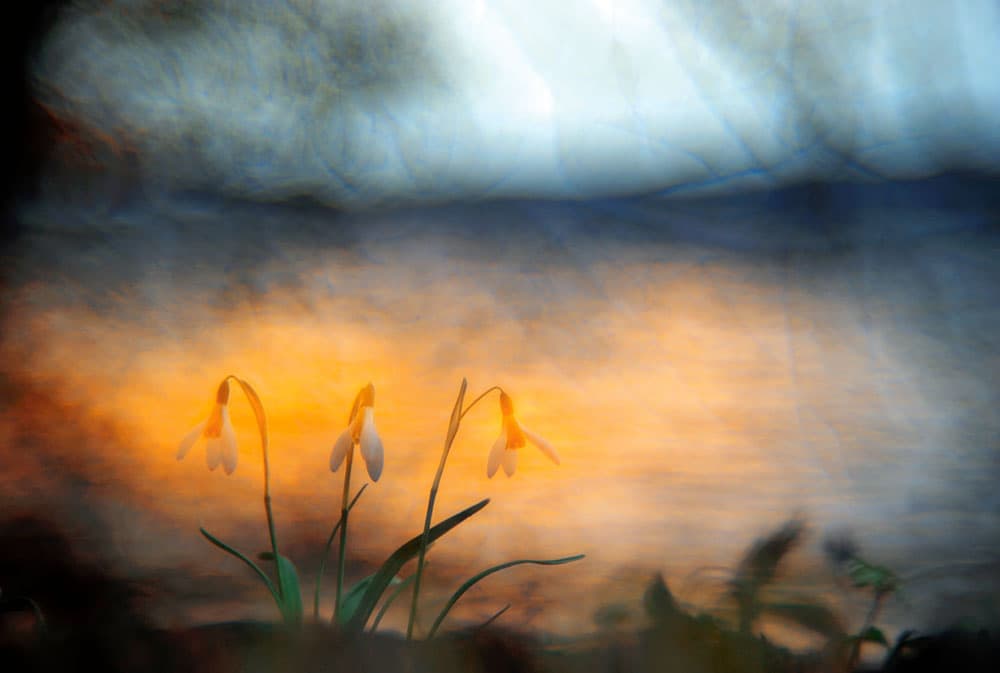
Sandra’s beautiful image of snowdrops against sun-reflected water wowed the judging panel of Wildlife Photographer of the Year 2011 Credit: Sandra Bartocha
There is probably no better example of the photographic potential to be realised from one’s local area than the work of Sandra Bartocha. Nearly seven years after her breakthrough success as a category winner in the Wildlife Photographer of the Year competition, Sandra continues to make frequent trips to the shores of her local lake in Mecklenburg, northern Germany, where she took her prize-winning picture of snowdrops against the golden surface of sun-reflected water (see above).
Much has happened since then: exhibitions, judging duties, the publication of LYS – arguably one of the best nature photography books of the decade – workshops and yet more awards, but still Sandra returns to her local lake for inspiration, particularly during spring, her favourite time of the year. ‘I think that everybody needs a place where he or she feels at home and where they are constantly returning,’ she says. ‘I have this little multi-visual show and people who grew up with me in my home town say it’s funny because 80% of what’s shown is taken at this one lake shore.’
It’s February when we speak and although Sandra’s schedule is taking her to the rugged shores of Lofoten in March, she is looking forward more to shooting the early spring flowers at home. ‘From March you can find all kinds of different flowering periods because the limestone is facing west, so you always have light and you always have water in the background and you have all the spring flowers, so I return every year with the aim of producing images that I have not done before.’
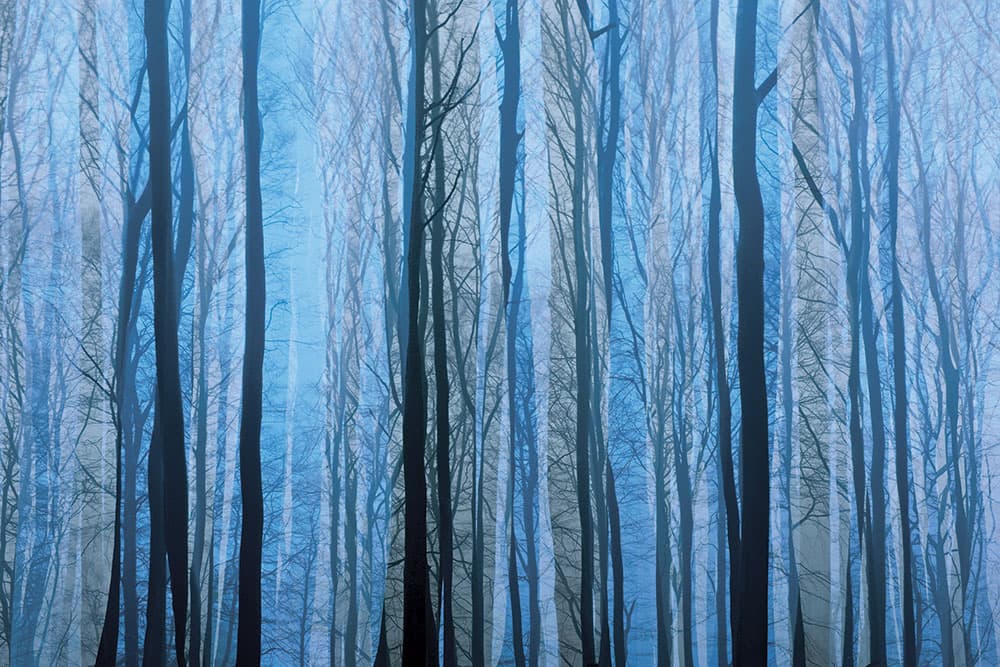
A triple exposure of a beech forest. The fog helps to create an interesting pattern in the overlay. Credit: Sandra Bartocha
Bubble bokeh
Another key component of Sandra’s success in 2011 was her technique and choice of lens. Explaining how she took her prize-winning image, she said: ‘I took an in-camera double exposure, with one sharp exposure and one much softer one, so the scene would appear as dreamy as it felt.’ Her lens choice was unusual at the time, a Meyer Optik Görlitz Trioplan 100mm f/2.8 macro, also known as the ‘soap bubble’ lens because of the bokeh it generates. The combination of this 15-aperture blade prime lens, based on an early 20th century design, and Sandra’s soft focus technique has inspired hundreds of plant photographers. Many have mimicked her style, some successfully, so does she feel flattered by this, or has it become an obstacle to her future path?
‘On the one hand it is flattering,’ she says, ‘but on the other hand it’s definitely an obstacle because I see people are getting tired of that style.’ To support her observation, she cites the response of fellow judges to entries clearly influenced by the technique she popularised. ‘I’ve been on many competition juries judging plant categories and as soon as there’s a flower with bokeh background they say, “No! We’ve seen that.” I’m regretting it a bit because I still think that they have their value and they are still beautiful.’ Fortunately, the views of her fellow competition judges have not put her off entirely, although she does admit to using the Trioplan 100mm ‘just 2% of my time now’. Sandra didn’t feel she was inventing anything new at the time, she was simply finding a way to convey the emotions she felt while enjoying the outdoors and drawing inspiration from her surroundings. ‘I never saw myself as a role model in any kind of photographic journey; it’s more like I’m happy to do it and I’m still happy at the results, but my inner self is not progressing enough.’
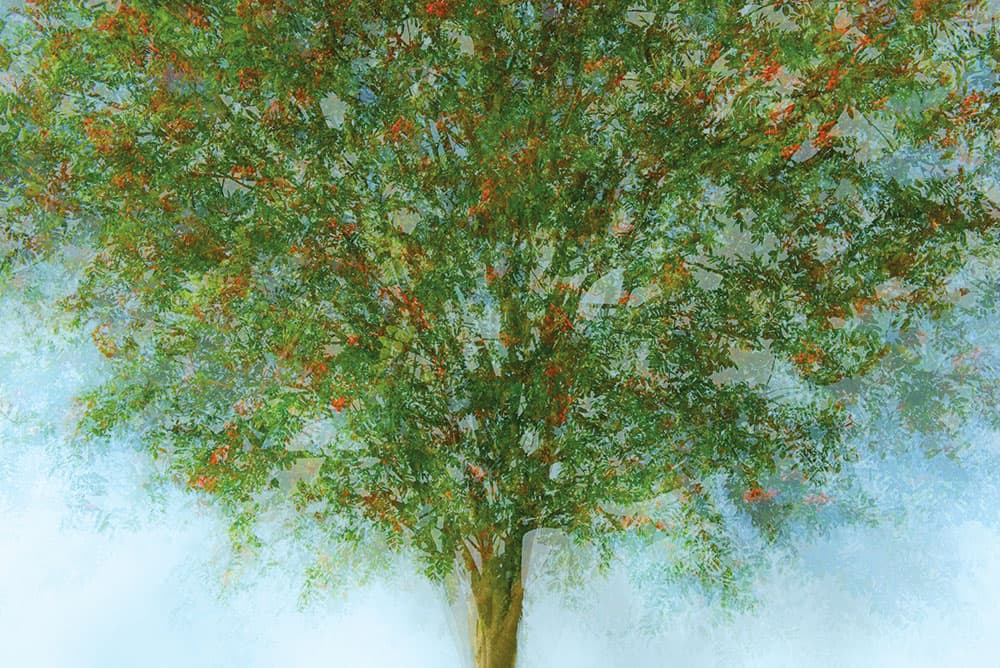
Sandra loves to create texture by blending multiple frames together. This image of a rowan tree comprises 10 exposures. Credit: Sandra Bartocha
An intimate journey
In 2016 Sandra and fellow photographer Werner Bollmann published LYS: An Intimate Journey to the North, the culmination of four years of dedicated coverage of the landscape and natural history of Scandinavia from the pastures of Jutland in the south to the frozen frontier of Svalbard in the Arctic. In total, Sandra and Werner spent around a year on and off the road, attempting to capture the essence of these landscapes in all their moods, in every season, up close and from afar. The book was widely acclaimed and the exhibition continues to tour across Europe. Shooting images for LYS represented a challenge for Sandra as she had to adapt to a style that didn’t immediately reflect her natural instincts. She explains: ‘With LYS, we tried to go away from the fancy stuff a bit, not playing around too much, not making double exposures and moving exposures (intentional camera movements), but to go back to the classic way of seeing the world and producing timeless pictures. I really liked that approach, to just go back to the core of what is out and to try to capture the essence of what’s in front of you. I really do enjoy both ways of seeing the world, it’s just that they don’t fit together too well.’
After four years devoted to such a demanding project, and the logistical challenges of editing images for a book, exhibition and multimedia presentation, Sandra admits to struggling to find a new sense of purpose. ‘I was in the midst of this project and I was very focused. Now it’s finished, I’m a bit lost,’ she reflects. ‘I know what I have to do, I know when I’m out I can create nice pictures, but people seem to be repeating all the same stories, again and again. I just don’t want to add to stuff that’s been done before.’
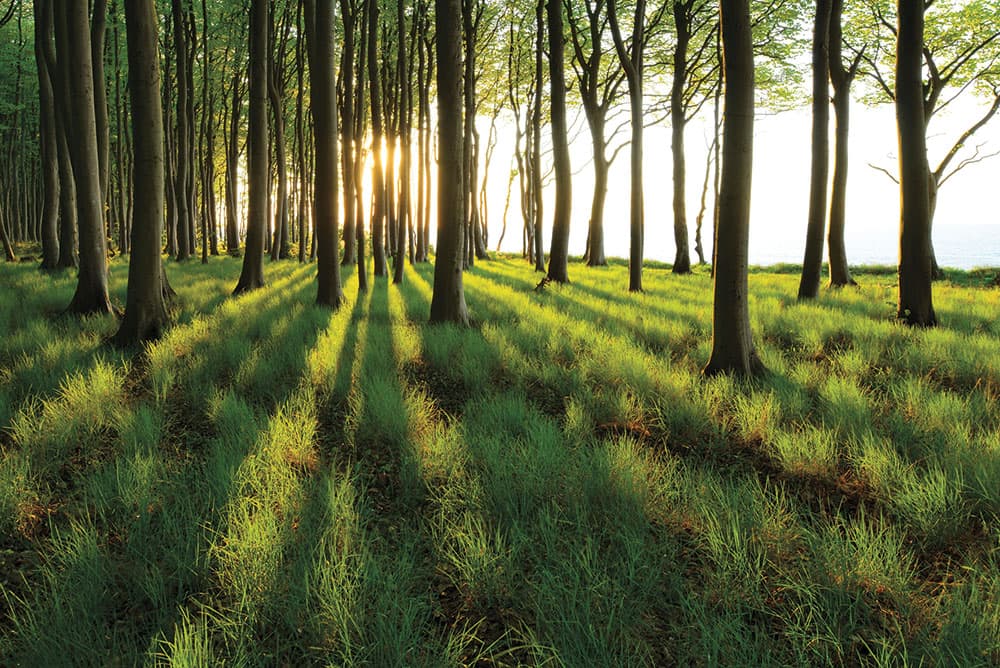
A coastal forest with strong backlight. By overexposing the scene slightly Sandra emphasised the shadows. Credit: Sandra Bartocha
Managing expectations
As much as Sandra likes being outside photographing early spring flowers for no other reason than to enjoy the moment, she is conscious of the expectation of others as they look to see what she will be showing next. ‘I’ve been invited to a landscape conference and I’m currently preparing what I’m going to talk about. Even this makes me think, what is it I’m about right now? What do I stand for, what are my goals, what’s most important? People still refer to me as a plant photographer – I enjoy it, but when I started it was not as popular as it is these days, and you can’t relax on the status of the past; you have to get going and produce new stuff.’
All that said, Sandra says there has been another project taking shape and now perhaps she has the time to develop it further. She reveals: ‘I wanted to do a book about the seasons. I’ve been planning this for many years and I already have a foreword and some poems by people prepared. I have to find the time to edit the pictures and make it into a little book.’ After the epic undertaking of LYS, a ‘little book’ seems like a step in the right direction for the attainment of new goals. It’s also easier to accommodate with her need of making regular returns to familiar locations, subjects and themes – her local lake, spring flowers and the seasonal changes on the woodland floor. ‘It’s just fascinating how the seasons play within a wood,’ she says, ‘With different undergrowth from time to time, it just changes so much. Nature photographers shoot during the spring and autumn because of the colours and then maybe in winter when there’s snow, but summer is often neglected. It’s absolutely fascinating to be in a forest in the summer because you understand why nothing is growing in a beech forest, for example, it’s pitch dark in there.’
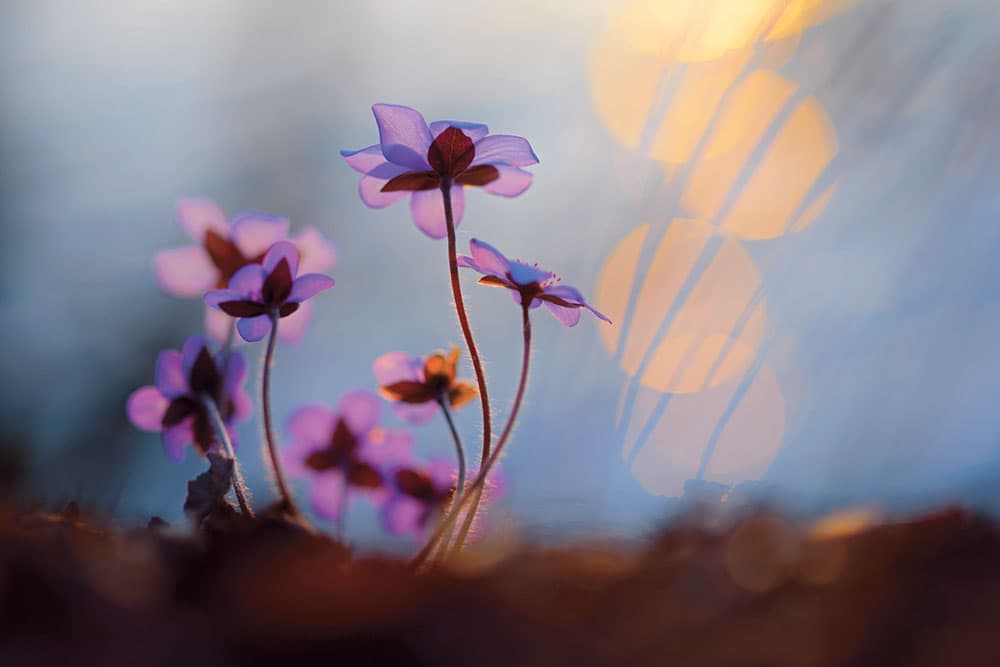
It was the light dancing in the background that fascinated Sandra when she was shooting these liverleafs. Credit: Sandra Bartocha
Favourite flower
But there is spring to enjoy first and Sandra knows exactly which flower she will be looking out for by the lakeside in Mecklenburg: a little purple perennial called Liverwort. Common all over central and northern Europe, Sandra has photographed it hundreds of times already. ‘It’s my favourite flower,’ she admits. ‘It’s so over-photographed but it’s just so beautiful and elegant and for me it marks the start of spring. It’s the first flower that appears in our forests, and I have to photograph it every year.’
It now seems a good time to ask her about the steps she follows when making one of her dream-like photographs, and for her advice to anyone who wants to improve their macro photography. ‘I think first you need to find the right spot,’ she replies. ‘You have to find a spot where you can be flexible with light and with the background. Finding the right spot includes paying attention to which plant you are photographing. If you have a forest floor of anemones then look for the one that is intact, that’s not beaten up, hit by the rain or nibbled by an insect. Then, of course, nothing beats getting down as much as you can, especially for macro work with very small subjects, getting really close and almost under the ground.’
So you’ve got to be prepared to get dirty, then? I ask. She laughs: ‘Yeah, you have to get dirty, that’s for sure! So, wear clothes that make it easy for you to get dirty!’ She continues: ‘Then pay attention to the light and the composition. I’m always seeing this in workshops: people are not paying attention to the smallest things, because with macro every millimetre you move changes the picture tremendously. Look for how the light is hitting the subject and how the composition is changing.’
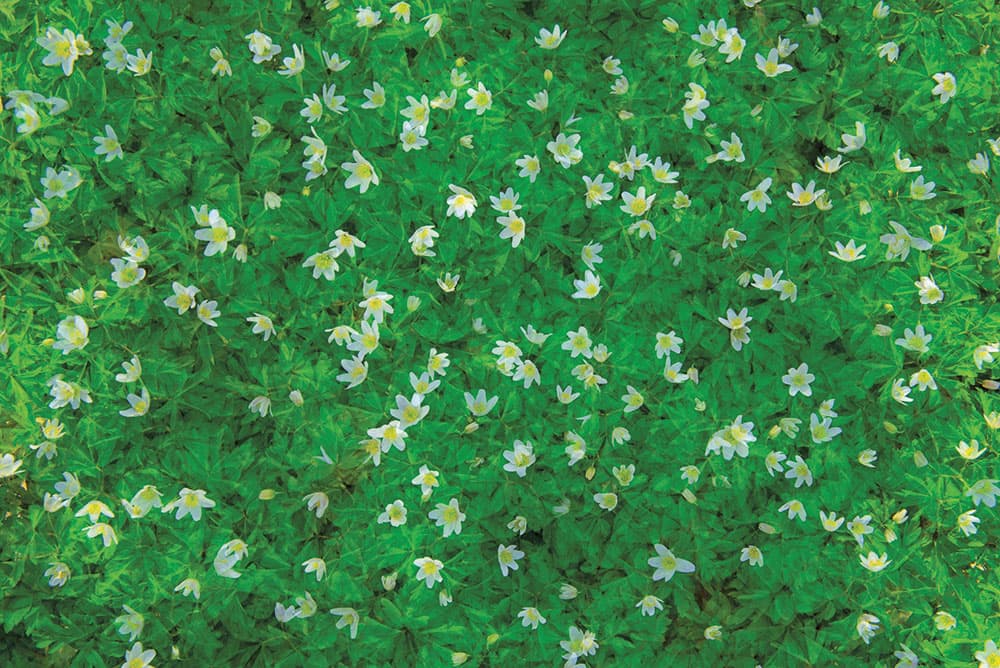
A triple exposure adds some mystique to this scene of wood anemones. Credit: Sandra Bartocha
Tripod? What tripod?
When it comes to making a list of the macro photographer’s essential kit, a tripod is mentioned virtually in the same breath as a high-quality macro lens. But here again, Sandra is happy to break with convention. ‘I’m not using a tripod for this kind of work because it’s too clumsy to change the composition,’ she declares. ‘Also, I’m destroying more of the surroundings I’m in because I’m trying to adjust it, so I think I’m much more flexible working without these things and especially with the high ISO capabilities now available. Even if it’s getting dark you can boost the ISO to take the picture without any stabilisation.’
She makes an exception for landscapes, however, when she will use a tripod ‘100%’ of the time. But she is quick to acknowledge that there is more to macro photography than her own indomitable style.
‘But, of course it depends on the direction you go with your macro work. If you want to do all this focus stacking then of course you need a tripod, but for my kind of photography where I’m really focusing on the light and the emotion and limited depth of field, no tripod is needed and it’s much easier to compose with a really nice background without [one].’ In other words, find your location, subject and background, get down low, and get dirty.
Lens choices
Today, Sandra only occasionally uses her Meyer Optik Görlitz Trioplan 100mm f/2.8 macro lens. She is more likely to reach for the Micro-Nikkor 105mm f/2.8 macro, the Nikkor 24-70mm f/2.8 zoom, or one of three tilt-and-shift Nikkor lenses – 24mm f/3.5, 45mm f/2.8 or 85mm f/2.8 – with her recently acquired Nikon D850. ‘The 85mm tilt and shift macro lens has a magnification factor of 1:2, so Sandra uses it for images of forest floors or stones, where she can move in close without compromising on sharpness. Her next favourite lens is the Nikkor 80-400mm f/4.5-5.6 zoom. ‘This is a very versatile zoom,’ she explains. ‘It’s very good quality for the flexibility I get because I like the compression of 400mm, even for flower and macro work.’

